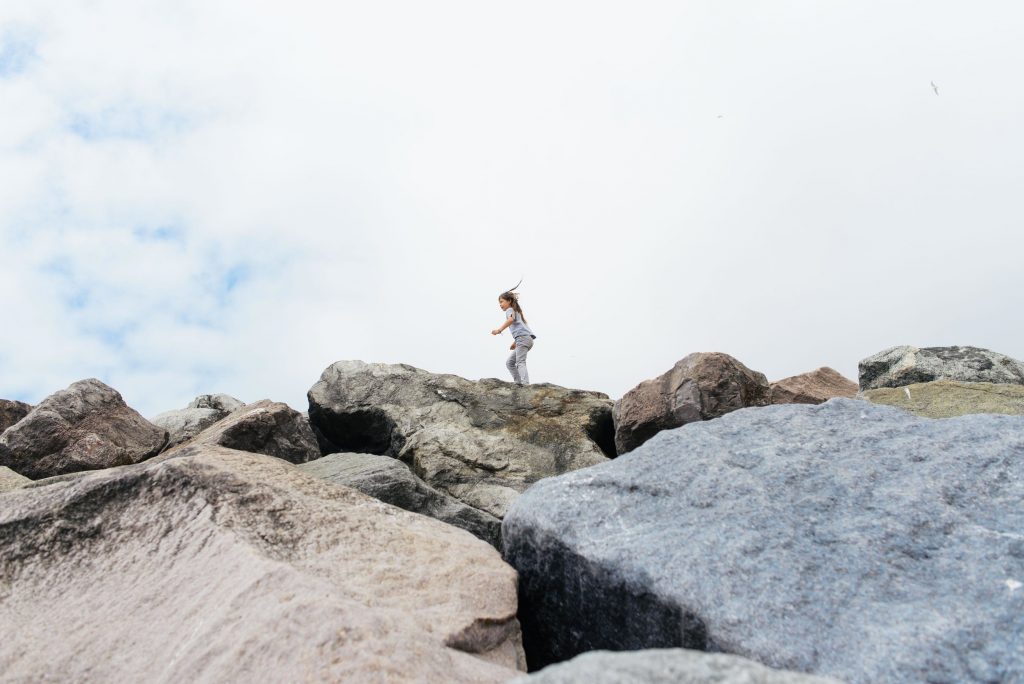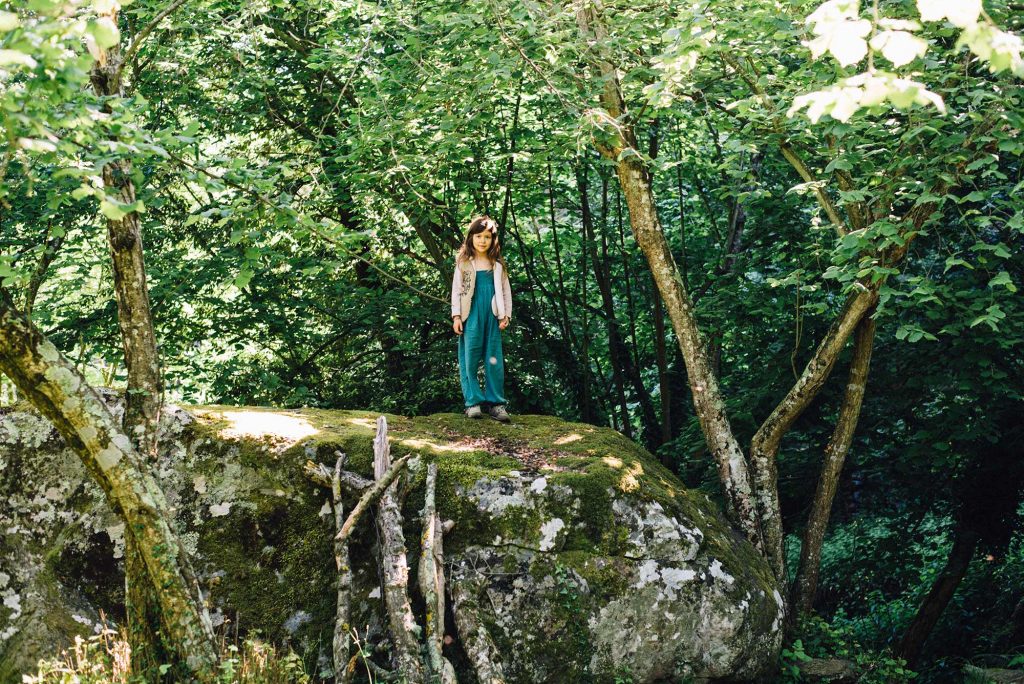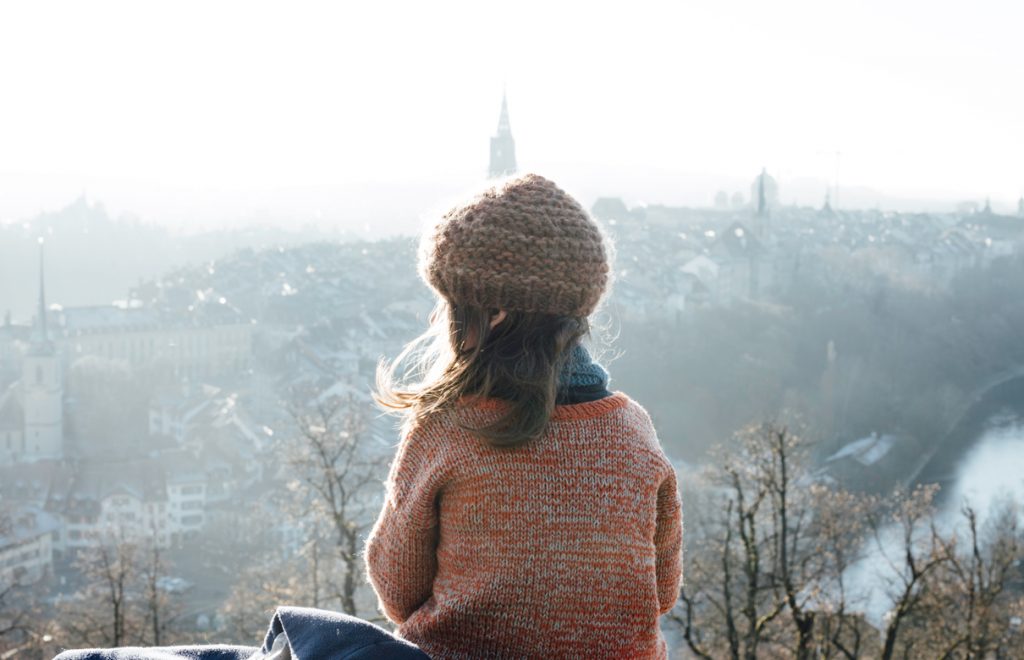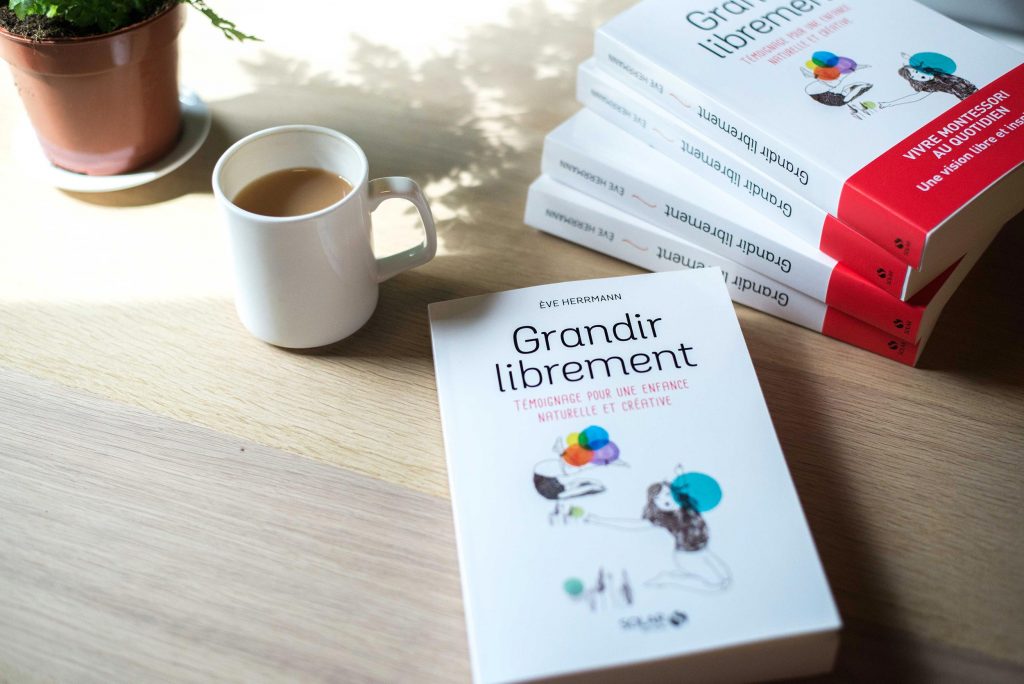Wild and free children – a visit with Eve Herrmann and family
Hello everyone! Today we have a super fun interview with Ève Herrmann which you are sure to find inspiring. After 10 years as a graphic designer, Ève became interested in alternative education and particularly Montessori. She helped to set up a Montessori school for 0-3 year olds in France and now lives in Lyon where she homeschools her two daughters, Liv and Émy, with a particular passion for raising wild and free children.
I love the photos on her blog and Instagram and find them always a lovely reminder to connect with nature as much as possible and the importance of letting children explore.
1. How did you find out about Montessori?
When I became a mother, I already had Montessori in mind, but I didn’t know much about it. I only had a vague idea.
When I was a child, my cousin – who lived in Bologna (Italy) – often came for the summer holidays. She had attended a 3 to 6 Montessori class, and she told me those years had been the best part of her schooling so far.
I was surprised because I didn’t like my school or my teachers very much.
So it was just with that tiny memory and the belief that traditional schools do not respect the child that I began to read my first Maria Montessori book: The Absorbent Mind. Quite a shock and a great discovery, which led me on a beautiful educational journey!



2. What do you find resonates most with you about the Montessori approach?
When I discovered Maria Montessori’s vision of the child it resonated first with my childhood. Even if my parents didn’t know anything about Maria Montessori and her approach, they raised me and my sisters with a lot of respect for who we were and with a lot of freedom (but without laxness).
I never took the time to think about my childhood before having my first daughter, but once she was there, it was constantly bubbling at the surface of my mind, like a reminder.
I was wondering how to offer her such a lovely childhood, but without doing exactly the same as my parents did. They left their native country (Switzerland) to settle in Corsica, in a wild place, in the middle of nowhere in a stone house in ruins. They wanted to be autonomous: they had a garden, some sheep and hens, and they made their own solar electricity.
I was far from having the same life when my daughter came. With my husband, we were living in the centre of Paris and were both working as graphic design freelancers.
Maria Montessori’s ideas brought a response to this question. It helped me to see clearly how I wanted to raise my child. I wanted to let her be herself, to follow her nature, to grow and unfold without force, no matter where we lived.
Montessori also resonated with my vision of the child. I could see that a classical style of education was leading the way in France. I could see how children were being directed and supervised by the adults (parents and caregivers) and I didn’t want to take this path myself with my little baby. On the contrary, the Montessori approach treats the child gently, with great care for their nature, and tend not to do something to the child, but to the environment. It resonates with me because I am very sensitive to my surroundings, and I could envision the great benefits it could have on the child.


3. What is currently your favourite thing to do with Liv and Émy?
I love when we go outside exploring nature, looking for birds or other things, like beaver tracks. Maria Montessori advised to let the children run free, bare feet in the grass after the rain. And said:
“There is no description, no image in any book that is capable of replacing the sight of real trees, and all the life to be found around them, in a real forest. Something emanates from those trees which speaks to the soul, something no book, no museum is capable of giving.”
– “From Childhood to Adolescence,” Maria Montessori
I can see the benefit of nature for my daughters and I need to be outside myself.
And when we come home, fuelled by all we saw in nature, I love to do nature journaling with them. We study the various specimens we brought back from our walk, we draw them and do research.
This work is wonderful to see more, to notice what we see, to ask questions, to open our mind. To guide me in this area I recommend this wonderful book : “The Laws Guide to Nature Drawing and Journaling,” by John Muir Laws.



4. How do you live in a city and raise wild and free children?
As I said in the previous question, we love going outside, in nature, and living in a big city makes this quite challenging. But we have learned to find nature in our environment.
We chose our apartment close to the biggest park in town. It has a lake, a forest, a zoo… But it took us time to discover hidden and wild places in that park.
When we are outside, I let the girls play free with the elements around them and I encourage them to focus on their surroundings through observation. I help them to be active, bold and intentional in their curiosity.
Nature is everywhere, we just have to look for it, to be open. Again, here is a book that helped me to see how to engage more with nature in the city: “How to Raise a Wild Child,” by Scott D. Sampson. This one is also beautifully inspiring : “Unseen City: The Majesty of Pigeons, the Discreet Charm of Snails & Other Wonders of the Urban Wilderness,” by Nathanael Johnson



5. What’s one tip you would give to other parents wanting to incorporate Montessori at home?
In the beginning, I was eager to gather all the Montessori materials to prepare beautiful and purposeful activities. It was quite an obsession and it took a lot of my time. I didn’t realise it kept me away from exploring the Montessori philosophy further, which is much deeper than lovely stuff on bright shelves.
So I recommend not to rush into the material, but rather to take time to explore the greatness of this philosophy. You have to first understand the nature of the child and the way to see him. In order not to get lost in material considerations, the observation of the child can be of great help.
It is essential to read Maria Montessori’s books. And here’s one book that helped me a lot to understand the adult’s role: “The Tao of Montessori: Reflections on Compassionate Teaching,” by Catherine McTamaney.


6. Can you tell us a bit about your new book “Grandir librement: Témoignage pour une enfance naturelle et créative”/”Growing Wild and Free: A Testimony for a Natural and Creative Childhood”? And will it be translated into English?
This book is the result of all the years I spent studying and experimenting with pedagogy: a testimony of my journey as a mother, trying to raise my girls in a free, conscious and creative way. Of course I talk about Montessori and the role it played; I talk about my vision of education; and what led me to homeschool my daughters.
I can’t tell if my book will be translated in English, but I hope so!

Thank you so much Ève for sharing your insight and your passion for nature, the outdoors, and letting children explore. Now I have some more books to on my list. I can’t wait to get started…
I also recommend looking at all the books Ève has worked on. There are some beautiful resources for all ages and cover many aspects of the Montessori philosophy, including some lovely picture books for children too.

Simone Davies has more than 20 years’ experience as an AMI Montessori educator. Simone is the author of “The Montessori Toddler” and co-author of “The Montessori Baby” and “The Montessori Child” books, comprehensive guides to raising children in a Montessori way. She currently runs parent-child Montessori classes in Amsterdam at her school Jacaranda Tree Montessori. She also has a popular blog, instagram and podcast “The Montessori Notebook” and is mother to two young adults.